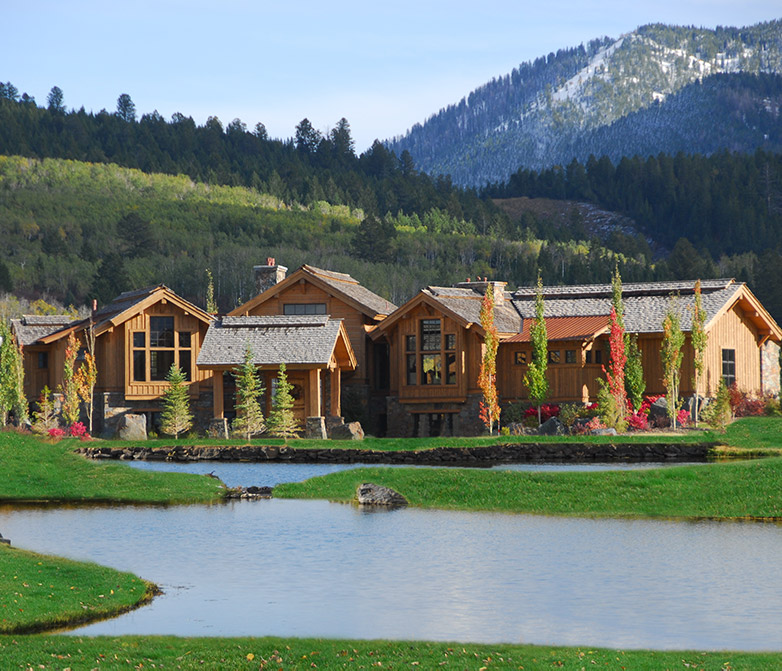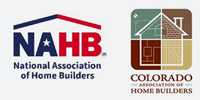Taking a proactive role as a Southwest Colorado home builder
As a La Plata or Archuleta County home builder, you know there’s no way to guarantee a home will be safe from wildfire. Yet, in our area, where the beauty—and combustibility—of the natural surroundings make living here so desirable, it pays to plan projects that are as fire safe as possible. Buyers, lenders, and insurance carriers increasingly demand it, and positioning your company as a leader in fire safety can give you an advantage.
Builder Magazine notes another reason for Four Corners construction companies to address fire resistance head on: avoiding issues and criticism down the road. A recent article in the publication quotes a manager of the National Fire Protection Association advising construction professionals to collaborate up front with fire experts and environmental organizations like the Nature Conservancy. Key groups like these may then view your company as one committed to good practices. There may even be perks in the offing, the magazine suggests.
Learning from the CSFS
You probably know quite a bit about fire safe building principles. But here’s what we found digging into the topic with help from the Colorado State Forest Service. There may be a nugget you’d like to explore further.
There are two ways to improve the fire resistance of new builds, according to the CSFS. One is to make sound decisions about outdoor space (and we suggest a special focus on decks); the second is to use materials that are minimally ignitable.
Evaluating Outdoor Space
If you’re developing a subdivision or building a group of homes, or even if you’re planning a home on a relatively large lot, you may have the chance to make choices about the surroundings to safeguard structures.
Developing an understanding about wildfire behavior is essential. This guide from the CSFS is a good place to start. You’ll want to be sure you’re familiar with concepts like these:
- Generally, the steeper the slope, the quicker a fire can spread and consume a home.
- This means the direction the slope faces. Southern- and southwestern-facing slopes heat up more quickly than others.
- Low spots on the property, such as saddles and gullies, can act as conduits for fire.
Naturally, there will be limits on what you can do about the property itself. But understanding the way fire is likely to travel in the area can help you enhance natural buffer areas, for instance. Perhaps you might place the driveway between natural fuel and the home. You may even have the opportunity to locate the house on the safest spot on the lot.


Planning Decks Strategically
Decks are integral to so many homes in Southwest Colorado; builders should understand why they are an inherent fire hazard and how risks can be minimized. Many decks, says the CSFS, “are built to burn almost as easily as wood stacked in a fireplace.” They can be so combustible, “that when a wildfire approaches, the deck often ignites before the fire gets to the structure.”
The CSFS suggests several ways to address this risk. One is to shield the deck with a patio below and a masonry or concrete wall below and in front—especially for decks facing downslope. Smart building materials and techniques are also advisable. You can use heavy timbers that will burn more slowly, retardant-treated wood or non-combustible material such as steel. Waterproof membranes can be incorporated to widen the choices of soffit materials too.
Choosing Building Materials
As home builder in La Plata or Archuleta County, you are probably quite familiar with local building codes and requirements. There are plenty of minute details and areas of potential confusion, however, especially when it comes to the various ratings for key materials used for framing and walls. Here’s another place the CSFS guide can help. It offers a detailed look at classes and ratings.
Constructing homes with fire safety in mind in Colorado can be seen as a challenge. Fortunately, there are some advantages to building here as well. For instance, double glazed windows used for their insulating properties happen to provide better fire protection than single paned windows. Metal roofs are popular here as they shed snow readily, and with the right material underneath, they are top rated for preventing flame spread. Home design in the Four Corners area often incorporates natural looking materials such as stone and synthetic stone—these are considered non-combustible.
Working as a Team
When you’re building a home or homes to put on the market, you’ll probably be working hand in hand with the architect and other professionals involved in the project. It should come naturally to discuss fire-resistant features and safer outdoor spaces where possible.
If your project is a custom home for a Southwest Colorado owner, it’s a good idea to sit down and talk about the plans with wildfires in mind. You may be able to help your client understand where terraces and patios might be better choices than decks, for example. At very least you can discuss the safety attributes of various materials and building techniques vs. the cost, and you’ll have the chance to explain why investing a little more up front may very well pay off in the years to come.




